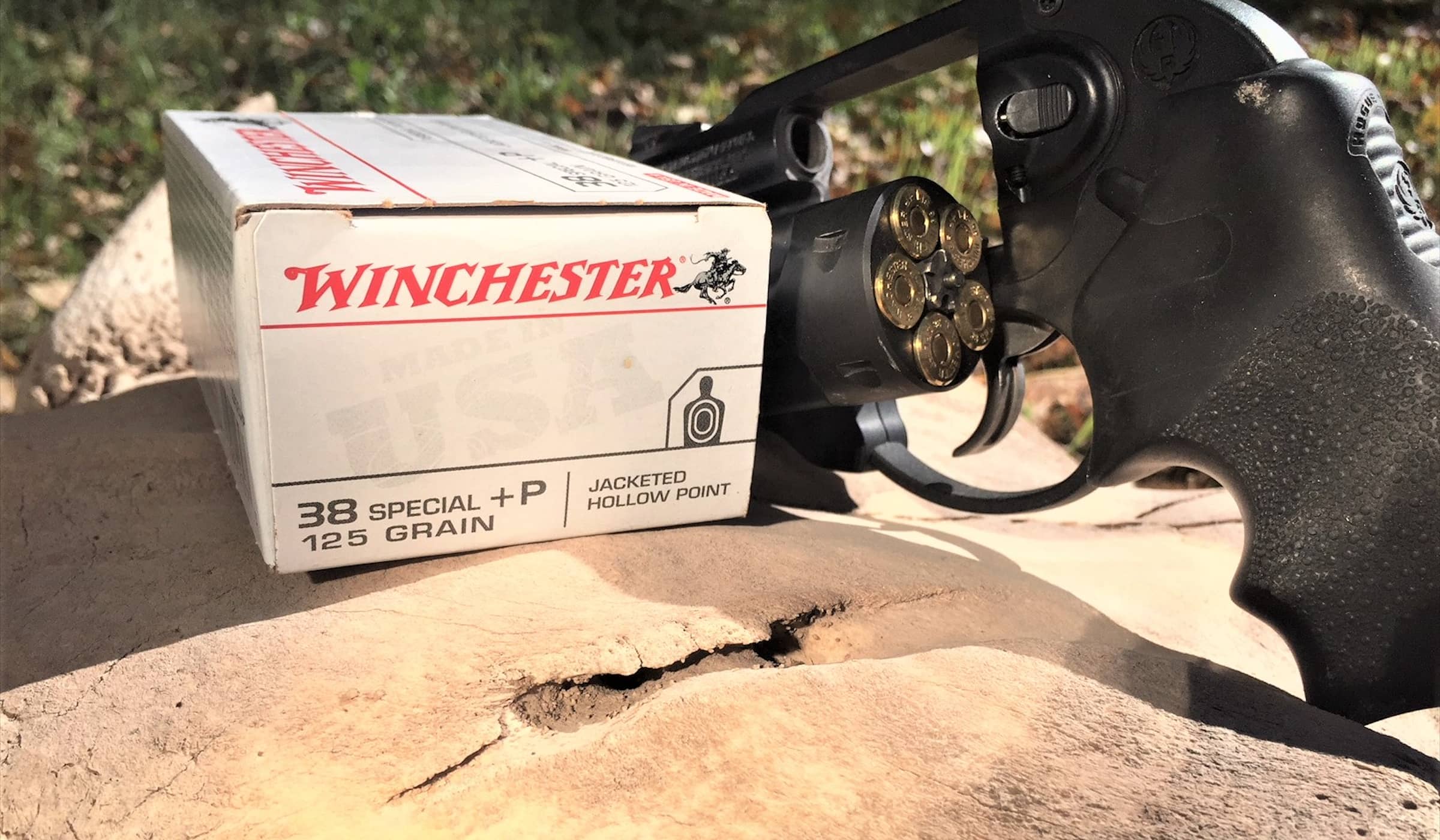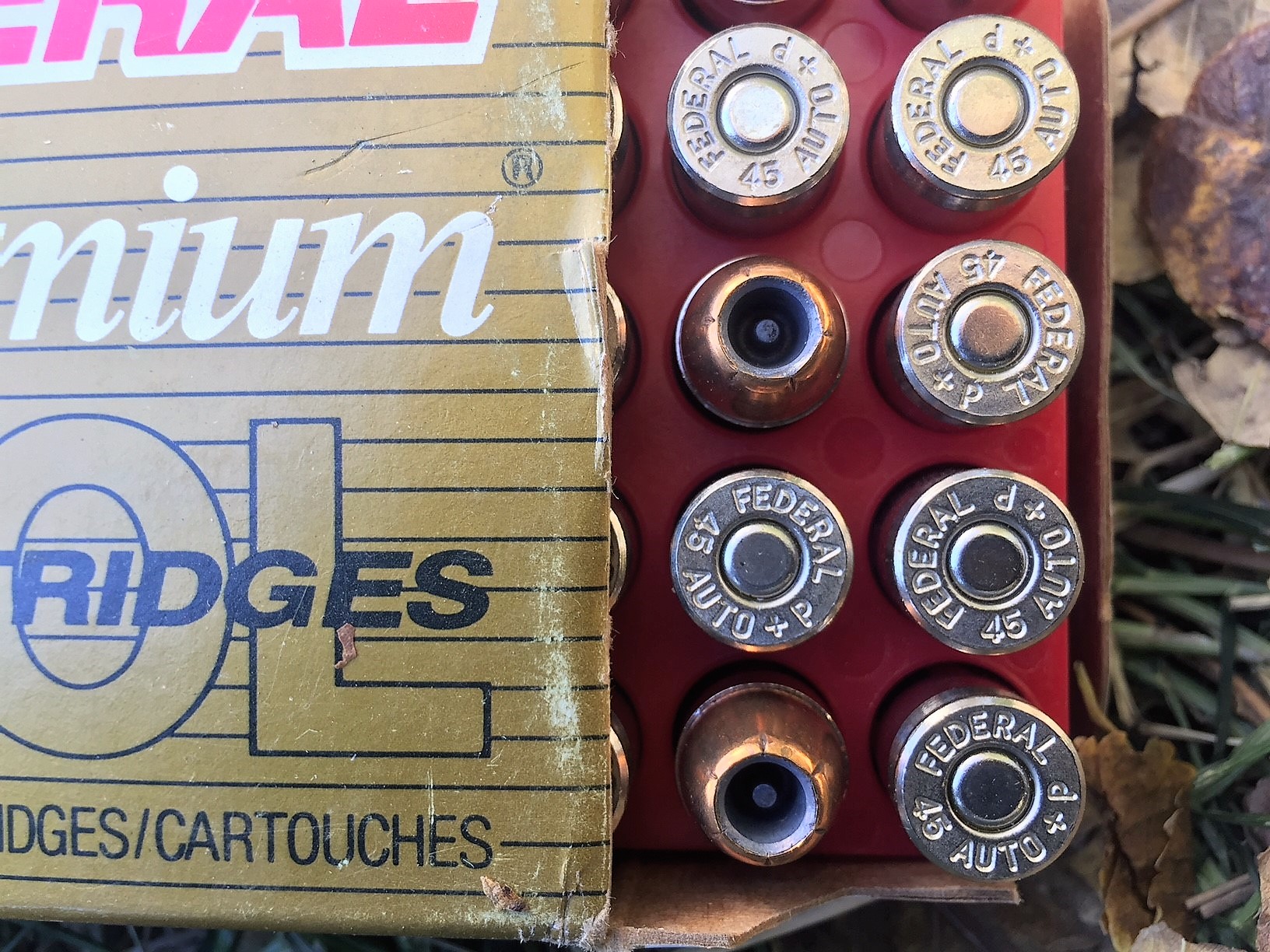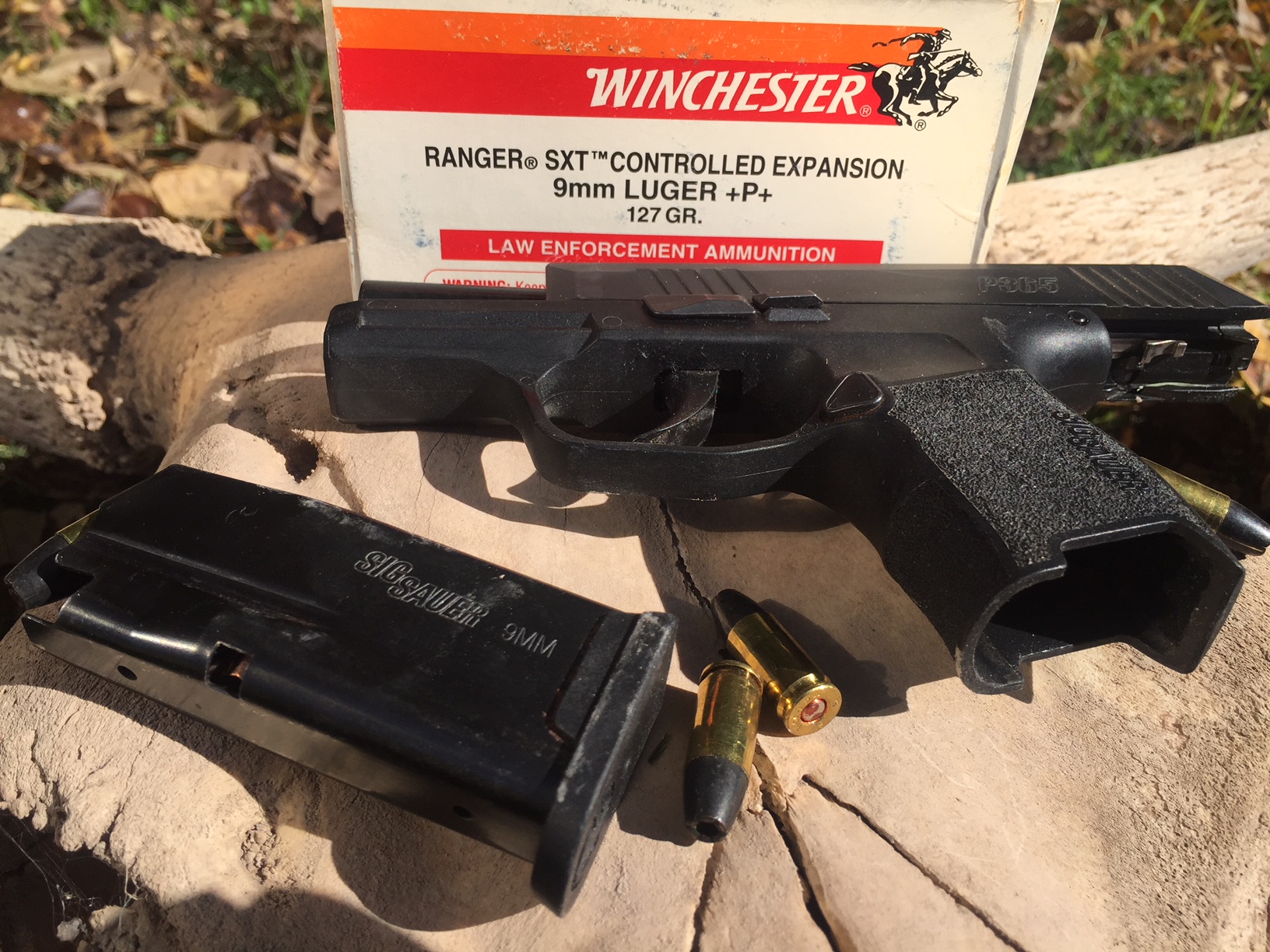Plus P ammo: a better choice for self-protection?
Eve Flanigan 11.14.18

A handful of students have said to me they use +P ammunition. When asked why, the answers are usually something like, “I think it’s better somehow.” Still more say they’ve never heard of it. Since ammunition for self-protection is kind of an important topic, I feel this variety of ammo deserves an article of its own.
What is +P and +P+ ammunition?
Prepare for a plethora of P’s! Plus-P ammunition is said to have more power, because it has more powder inside the case compared to the average for a given caliber. But really, the P is for pressure. It’s gas pressure, after all, that provides—wait for it—propulsion to drive the bullet through the barrel.
Plus-P ammunition is found most commonly in revolver calibers like .38 Special and .357 Magnum. It’s also available, but a little harder to find, in semiauto calibers as small as 9mm and up to .45 ACP.

The increased powder charge inside the +P case is undetectable from outside observation except for one important sign—it’s noted on the headstamp of factory-loaded ammunition, as well as on the box end for the corresponding ammo. That extra powder results in greater muzzle velocity, and it would seem, more impact, or force, on target since acceleration is a component of force.

That gain in velocity isn’t the end of the story, at least for most +P ammo. To maintain proper function through timing of the shot sequence, the grain weight of the bullet loaded with +P ammo is usually a light to medium one as compared to average weights for any given caliber. For example, it’s rare to find a 147 grain +P load in 9mm, but 124 and 115 grain weights are easier to find. Companies want their products to work in your firearm, after all.
In general, the gain in acceleration is moderated by a medium to lightweight bullet—therefore, the supposed greater impact of +P is perhaps less than some people believe and desire.
There is one exception to this lighter grain-weight rule that I know of, an innovative .45 ACP load called the Equalizer +P. It’s made by American manufacturer Double Tap Ammunition, a company founded, owned, and operated by a brilliant but unsung hero of ammunition development, Mike McNett. This innovative round packs a whopping 255 grains of weight into a .45 ACP load that averages 875 feet per second muzzle velocity. How did McNett seemingly overcome the laws of physics? He packed two smaller projectiles into one, making this .45 load more like a mini-blast of buckshot. The ammo is guaranteed to place the projectiles within an inch of each other at seven yards and no more than two inches apart at 25 yards.
General construction standards for +P ammunition, and all commercial ammo for that matter, are set by a quasi-regulatory body called SAAMI—the Sporting Arms and Ammunition Manufacturing Institute. Since 1926, SAAMI has been charged by the US Congress with the task of “creating and publishing industry standards for safety, interchangeability, reliability and quality, coordinating technical data and promoting safe and responsible firearms use.” For gun owners, the organization even keeps a list of easily confused but dangerous firearm chambering/ammunition combinations.
Notice I didn’t mention +P+ ammo in the previous paragraph. When this designation is on the box, it’s an indicator that the manufacturer took a chance and went outside the parameters of the recommended, but not prescribed, SAAMI pressure envelope.
Should I use +P or +P+ ammo?
Whether or not to use +P or +P+ ammunition is a decision to be considered in two parts: mechanical and ethical, seeing that it is a self-defense purpose load.
Before using +P, check to see that your handgun is rated to fire it. On some modern revolvers, it’s stamped right on the barrel along with the caliber. Such is the case with my Ruger LCR, chambered in .38 Special. If that stamp is there, you’re good to go. Some manufacturers note a specific gun’s ability to handle +P in the owner’s manual. Glock is one example, but puts you as the user to work. Glock pistols are conditionally approved to fire +P ammunition that is within SAAMI guidelines for the caliber. It’s up to the user to research the ammo of their choice to see if it fits into those parameters.

Even if your gun isn’t rated for +P, a round now and again isn’t likely to cause damage. Thanks to the extra velocity, be aware that +P, like most defensive loads, will cause more recoil than the average FMJ. Over time, consistent use of any “hot” loads can cause parts to wear out a bit faster than normal.
The ammunition you choose is of secondary importance to your shooting skills. The best defensive round does no good when it misses the target. Assuming you’re competent at placing rounds where you intend them to go, selecting +P or +P+ is first a mechanical consideration of whether it’s suited to your firearm, and secondly a personal preference. Some people simply feel more confident with this ammunition in their carry gun.
A handful of new carriers have, in recent months, commented to me about their desire to only hurt and not kill an attacker, a discussion that arose as a result of them answering “true” to the statement “full metal jacket ammunition is preferable to hollow point ammo for personal defense.” For this reason, I feel the need to address ammunition selection from an ethical perspective. Here are the key points:
- You are legally responsible for every round that leaves the muzzle.
- FMJ is made to penetrate on impact. It has more potential to travel through its initial target and into some other unintended target.
- Hollow point, which includes many types of +P ammunition, is designed to expand on impact and expend all of its energy in 15 inches or less. The intent to be responsible for preventing over-penetration is a valid one in a public setting, while effectively addressing the threat.
- The intent of any shot fired in defense of self or another is to stop the attack. Any ammunition is capable of stopping an attack; how well and quickly it works depends not only on ammunition but on other factors, cardinal of which are the attacker’s determination and shot placement. There is no guarantee that hollow points will cease their path of travel on the initial object of impact—that depends on the density of that object. Hollow points are simply more likely to stop instead of going through the first thing they hit.
Those are very general rules for thinking about choices of ammunition. Numerous variables are thrown in by things like barrel length and the situation in which deadly force is employed.
Procuring +P
The cost of +P ammunition is on par with that of premium hollow point loads. While +P can be difficult to find in anything but big-box gun stores, online retailers such as Lucky Gunner offer a wide selection.
Proper preparation for self-protection may include +P, a popular ballstic product. Pick prudently!

